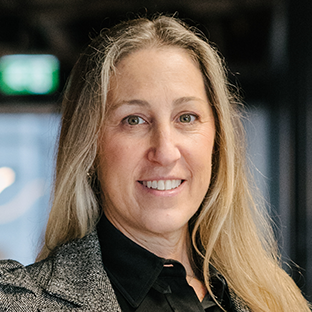Healthcare Design looks back on the past year’s Take 5 blogs from leading healthcare design professionals to explore what issues were driving conversations across the industry. Here are five takeaways that stood out.

David Taglione (Headshot: Journey)
Hyper-personalization via AI
In the future, the patient experience will also be radically reimagined through customizable digital environments. Imagine hospital rooms that adapt in real-time with personalized greetings, mood-responsive digital art, and ambient settings tailored to individual preferences for music and lighting.—David Taglione, managing director, Journey (New York)
Read more here.

Noah Waxman (Headshot: Willian Matiola, Cactus)
Designing for human connection
Physical spaces should be planned and designed to better support digital tools, integrating technology within the built environment so that it supports healthcare professionals and patients instead of creating a barrier between them. For example, careful placement of recessed digital screens and artificial intelligence note-capture solutions can take the burden of data entry off the physician during a clinical interaction, further improving the human-to-human interaction.—Noah Waxman, CEO and cofounder, Cactus (New York)
Read more here.

Michele Cohen (Headshot: Courtesy of B+H)
New life for aging facilities
Much of the future of healthcare design isn’t about demolishing aging infrastructure and building new but adapting existing assets to meet institutional needs. One scenario is “down tech-ing” or repurposing aging inpatient facilities into ambulatory clinics, administrative offices, education spaces, rehabilitation facilities, or long-term care centers. Another scenario is “up tech-ing” data centers or corporate offices into patient-facing spaces that can seamlessly adjust to different scales of operation without compromising efficiency or patient care.—Michele Cohen, principal, B+H Architects (Toronto)
Read more here.

Heena Santry (Headshot credit: Courtesy of Tim Santry)
Cultural influence
Acknowledging the intersection of culture and healing in the built environment means engaging local community members in the design process—allowing them to influence the aesthetics, layouts, and workflows—in a way that aligns with cultural beliefs about illness and healing. Medical planners might design waiting areas to accommodate cultures where multigenerational support is paramount during health crises.—Heena Santry, healthcare principal, Arcadis (Amsterdam)
Read more here.

Morgan Crowder (Image credit: Courtesy of Gensler)
Generational care needs
A 2019 study by the Blue Cross Blue Shield Association found that millennials have significantly higher rates of nearly every major health condition, including depression, Type 2 diabetes, and hypertension, than Gen X did at the same age. The outcome is a generation that may need more care earlier and for longer. For healthcare designers, this means thinking now about adaptable spaces that can accommodate both immediate and long-term changes in services.—Morgan Crowder, healthcare practice area leader and healthcare, Gensler (Dallas)
Read more here.












